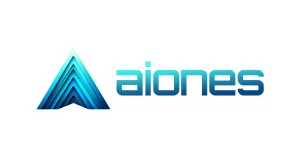
Welcome to a new chapter in our blog, where we shift our focus to a more enlightening perspective.
Born from a wealth of experience and hard-earned lessons in real-life process implementation projects, aiones is not just a platform, but a culmination of insights and strategies. In this spirit, we’re excited to introduce our bi-monthly ‘Tuesday Talks’ series.
‘Tuesday Talks’ are bite-sized and concise yet insightful, aimed at imparting valuable learnings that could significantly benefit your process management journey.
In our first article, we delve into a subject that resonates deeply with us and, likely, with many of you – Business Process Automation.
Today, we want to bring your attention to three major pain points, and give you insights on each
- Identify Real Potential
- Create The Right Setup
- Go Live Early
So let us dive in and take a look at the first topic
Identifying Real Potential
The journey of automation begins with a critical step: selecting the right scope.
This decision is pivotal, especially when resources are limited. It’s not just about automating processes, but choosing the right processes to automate that align with your strategic vision.
We have seen too many automation projects go into production, just to end up improving metrics, that they weren’t intended to improve – while some even managed to harm those targets, that they set out to achieve.
Set your goal right, find the lense to take a deep look into your processes, and pick the most essencial!
The Goal: Meaningful Improvements
“Understand what you’re trying to achieve and think if the chosen approach will effectively benefit the set goal”
Automation is a tool for improvement, but the real question is, what exactly are you aiming to improve?
Consider a scenario where you automate customer request responses.
While this might save time for your team, it could inadvertently increase the request cycle time for easily resolvable queries and diminish customer satisfaction due to the lack of personalized responses.
Adding new categories to sort into could also create additional burdens for your IT department and lead to misclassification issues.
The key is to have a crystal-clear objective for your automation efforts to ensure each project will align with your overall goals.
Zooming In: The Power of Task-Based Focus
“Start searching for potential at the micro level – within tasks, decisions and handling routines”
When exploring potentials in process automation, start small – think in terms of tasks, decisions and handling routines rather than entire processes.
By examining potentials at this meta level, you uncover opportunities that may affect multiple, if not all, processes within your organization. This broad perspective can lead to high-impact improvements, offering substantial returns on your automation investments.
Consider, for instance, your sales process. Writing a bill is just one part of this complex procedure, but this routine is also essential in various other departments and processes. Identifying such common tasks and automating them can streamline operations across different areas of your business.
Furthermore, it’s essential to recognize the stark contrast in effort and resources needed when automating an entire process versus automating just a single step.
The Simplicity of Repetitive Tasks
“First and foremost, automate only routine tasks that are highly repetitive and predictible”
It’s a straightforward principle: prioritize automating tasks and processes that are frequent and predictable.
The rarer or more complex a routine is, the lower it should be on your automation priority list. Focusing on these predictable tasks can lead to significant time savings in the long run.
This applies to almost all cases regardless of the organizations set goals.
Even if you aim to reduce error rates and associated risks – if the associated process is executed twice a year, it might be wise to add more human oversight or seek tools to assist your team, than to automate.
Saving one second a thousand times proves to be more valuable, than saving two minutes twice.
Create The Right Setup
The successful implementation of process automation hinges on identifying the right leadership.
Is it the realm of process management, project management, or technology departments? The choice of leadership goes beyond operational roles; it sets the foundation for the entire automation strategy.
The operational environment, adherence to guidelines, and integration of best practices aren’t just operational details—they are the cornerstone decisions that shape the trajectory of your automation efforts.
Empowering Process and Quality Management Teams
“Modern process automation belongs in the hand of experts – process and quality experts”
The advent of user-friendly, low-code automation platforms has revolutionized the field, making it accessible to process and quality management teams. These non-technical experts are now at the forefront of automation, leveraging their deep understanding of business processes to drive improvements.
Technical team members, who excel in creating flexible, code-based solutions, may find these platforms less intuitive and their efficiency compromised. Their expertise, while invaluable, can sometimes lead to overengineering or a lack of consideration for the evolving nature of business processes.
By empowering process and quality teams to take charge of automation efforts, your organization benefits from a more focused and continuous development approach. These teams, deeply entrenched in the daily workings and objectives of your business, can align automation strategies more closely with your overall goals.
Keeping IT at an Optimal Distance
“In process automation efforts, technology departments have to take on a facilitating role”
In the realm of process automation, IT departments are transitioning to a role that is more about facilitation than control. This shift is crucial to avoid potential inefficiencies and disconnection between the technological solutions and the process and quality management teams who use them.
A balanced approach is essential, where IT supports and guides rather than dictates the automation strategy. This ensures that the solutions developed are not only effective but also intuitively manageable by non-technical teams on a day-to-day basis.
We’re not looking to transform our process and quality management teams into technicians by adopting all the traditional IT standards and best practices.
Instead, our IT departments are tasked with laying a solid foundation—focusing on system security, performance, and connectivity. Their role is to create an environment where it feels effortless and intuitive for process and quality teams to develop and implement automation solutions.
Incorporating Development Insights into Automation
“Educate your team on the most beneficial concepts of coding standards”
Even though process managers may not typically be immersed in coding principles, these fundamentals are incredibly relevant and beneficial in the realm of process automation.
Just as good coding relies on modularization and simplifying complex issues into manageable, reusable parts, effective automation thrives on similar principles.
The IT departments, often seen as peripheral in process management, hold a wealth of knowledge in core automation principles such as naming conventions, grouping, modularization, logic, and efficient data handling.
It’s crucial to leverage this expertise, ensuring a transfer of knowledge that enriches your team’s approach to automation.
However, it’s equally important to delineate what’s essential for the team’s needs, avoiding unnecessary complexities that could hinder rather than help the process.
Go Live Early
The mantra for successful process automation is simple: go live quickly.
If you’re envisioning your first implementation a month or even multiple away, it’s time to rethink and simplify. The objective is to deploy smaller, manageable parts of the automation rapidly.
These elements don’t need to form a complete end-to-end solution immediately; what’s crucial is that they are tested in real-world scenarios and receive prompt feedback from your team.
Embracing Realistic Practicality
“Let go of ‘what-ifs’ and near-perfect visions that cloud practical judgment”
In the realm of process automation, the emphasis should be squarely on practicality, eschewing the temptation to integrate an array of complex software solutions or chase after aesthetically pleasing interfaces.
Our goal is to foster an ecosystem where simplicity and efficiency reign, constructing a process-driven architecture that serves as a competitive asset rather than a financial drain.
Opting for rare or overly complex solutions can unnecessarily extend your time to implementation, adding days, weeks, or even months without yielding any additional benefits.
Strive for the simplest yet effective approach that aligns with your company’s established guidelines and prepare to exchange your work at any time with a new approach.
It’s crucial to ensure that this ethos of simplicity and practicality is deeply ingrained in your company culture.
Leveraging Compounding Efficiency
“Every second saved allows you to spend more time on automating the next second”
One of the key lessons we’ve gleaned from our experience is the concept of ‘compounding efficiency.’
This principle is based on the idea that small, incremental improvements in automation can accumulate over time, leading to substantial gains.
Initiating the automation process with smaller tasks can seem less impactful at first. However, this approach methodically frees up resources and bandwidth, enabling your team to progressively tackle more complex and significant challenges.
This step-by-step progression not only makes the task more manageable but also ensures a steady enhancement of your automation capabilities.
Utilizing advanced tools in the market, like Signavio or FireStart, these smaller automated routines, once developed, can be synergistically combined to form complete, end-to-end process cycles.
Early Utilization of New Potentials
“Walking at a slower pace, with smaller increments, allows process evolution along the journey”
While the initial intent is often to automate existing workflows, the introduction of new technologies frequently uncovers untapped potentials.
The question then arises: should we stick to the known path, or seize the opportunity to evolve our processes during automation?
By implementing automation in smaller, manageable segments, you create a dynamic environment where each phase builds upon the learnings of the previous.
This approach not only benefits from the lessons learned earlier but also opens the door to progressive evolution based on new insights.
This strategy empowers you to make informed decisions about which aspects of your process should undergo transformation at any given moment, and which should be implemented as originally planned.
It’s a journey of continual adaptation and improvement, ensuring that your automation efforts are as dynamic and forward-thinking as your business.
Need A Headstart?
If you find yourself at a crossroads, uncertain of the next steps in your automation journey, aiones is here to guide you.
We specialize in helping you discover and meticulously design processes, turning them into a dynamic hub of knowledge and innovation.
Our platform is not just a tool; it’s a partner in your journey towards streamlined and intelligent process management.
Understand your processes and their potentials
“Implement knowledge such as this into processes directly”
At the heart of aiones lies its unique capability to foster collaborative process improvement.
Once you’ve captured, unearthed, or crafted your processes using our platform, it opens up a dynamic world where you and your team can actively delve into, interrogate, and refine these processes.
Imagine seeking ways to boost customer satisfaction. aiones doesn’t just respond to this ambition; it actively guides you to the precise steps necessary, integrating and applying all the learnings we’ve shared.
From now on, you do not just do “process automation” – it’s “intelligent process evolution tailored to your specific goals”.
Join Our Early Access Phase
We’re excited to extend an invitation to you to join our early access phase.
This is a unique opportunity to be at the forefront of process automation and design, leveraging the latest in AI-driven process discovery and optimization.
By joining early, you gain the advantage of shaping the future of your business processes with aiones, while also contributing to the evolution of our platform.
We are looking forward to hear from you
See you in our next blog post











